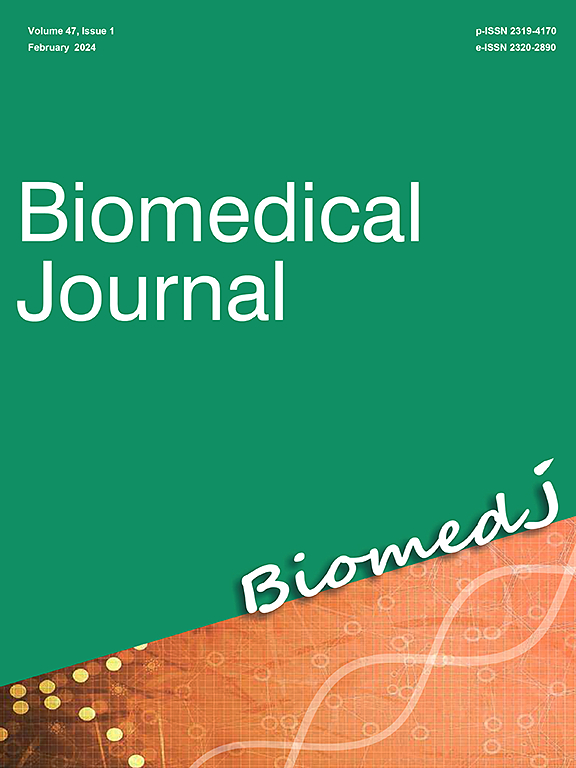miR-424/322 attenuates cardiac remodeling by modulating the nuclear factor-activated T-cell 3/furin pathway
IF 4.4
3区 医学
Q2 BIOCHEMISTRY & MOLECULAR BIOLOGY
引用次数: 0
Abstract
Background
Cardiac remodeling is implicated in numerous physiologic and pathologic conditions, including scar formation, heart failure, and cardiac arrhythmias. Nuclear factor-activated T-cell cytoplasmic (NFATc) is a crucial transcription factor that regulates cardiac remodeling. MicroRNA (miR)-424/322 has pathophysiological roles in the cardiovascular and respiratory systems by modulating hypoxia and inflammatory pathways. The role of miR-424/322 in regulating cardiac remodeling is under investigation. We identified several cardiac hypertrophy and fibrosis-related molecules as putative targets of miR-424/322. We propose that miR-424/322 could have crucial roles in cardiac remodeling by modulating several key molecules for cardiac fibrosis and hypertrophy.
Methods
Human cardiac fibroblasts (HCFs) and a myogenic cell line H9c2 cells were used for in vitro experiments. A murine model of angiotensin II (AngII)-induced cardiac remodeling was used to assess the roles of miR-322 on cardiac hypertrophy and fibrosis in vivo. Immunoblotting, immunofluorescence, real-time polymerase chain reaction and cell proliferation, Sirius Red, and dual-luciferase reporter assays were used to decipher the molecular mechanism.
Results
We found that miR-322 knockout mice were susceptible to AngII-induced cardiac fibrosis and hypertrophy in vivo. Administration of miR-424/322 inhibitors aggravated AngII-induced overexpression of NFATc3, furin, natriuretic peptides and collagen 1A1 in H9c2 cells and HCFs. miR-424/322 mimics reversed the AngII-induced fibrosis, hypertrophy, and proliferation by targeting NFATc3 and furin in vitro. miR-424/322 could be transactivated by NFATc3. Exogenous miR-322 ameliorated AngII-induced hypertrophy and cardiac fibrosis in vivo.
Conclusions
The NFATc3/miR-424/322/furin axis is crucial for developing cardiac remodeling, and exogenous miR-322 mimics could have therapeutic potential in cardiac remodeling.
miR-424/322 通过调节核因子激活的 T 细胞 3/furin 通路减轻心脏重塑。
背景:心脏重塑与多种生理和病理状况有关,包括瘢痕形成、心力衰竭和心律失常。细胞质激活 T 细胞核因子(NFATc)是调节心脏重塑的重要转录因子。微RNA(miR)-424/322通过调节缺氧和炎症途径,在心血管和呼吸系统中发挥病理生理作用。目前正在研究 miR-424/322 在调节心脏重塑中的作用。我们确定了几个与心脏肥大和纤维化相关的分子为 miR-424/322 的假定靶点。我们认为,miR-424/322 可通过调节心脏纤维化和肥厚的几个关键分子在心脏重塑中发挥关键作用。用血管紧张素 II(AngII)诱导的小鼠心脏重塑模型来评估 miR-322 在体内对心脏肥大和纤维化的作用。免疫印迹、免疫荧光、实时聚合酶链反应、细胞增殖、天狼星红和双荧光素酶报告实验被用来破译分子机制:结果:我们发现 miR-322 基因敲除小鼠易受 AngII 诱导的体内心脏纤维化和肥厚的影响。在体外,miR-424/322 模拟物通过靶向 NFATc3 和 furin 逆转了 AngII 诱导的纤维化、肥厚和增殖。外源性 miR-322 可改善 AngII 诱导的体内肥厚和心脏纤维化:结论:NFATc3/miR-424/322/呋喃轴对心脏重塑的发展至关重要,外源性miR-322模拟物对心脏重塑具有治疗潜力。
本文章由计算机程序翻译,如有差异,请以英文原文为准。
求助全文
约1分钟内获得全文
求助全文
来源期刊

Biomedical Journal
Medicine-General Medicine
CiteScore
11.60
自引率
1.80%
发文量
128
审稿时长
42 days
期刊介绍:
Biomedical Journal publishes 6 peer-reviewed issues per year in all fields of clinical and biomedical sciences for an internationally diverse authorship. Unlike most open access journals, which are free to readers but not authors, Biomedical Journal does not charge for subscription, submission, processing or publication of manuscripts, nor for color reproduction of photographs.
Clinical studies, accounts of clinical trials, biomarker studies, and characterization of human pathogens are within the scope of the journal, as well as basic studies in model species such as Escherichia coli, Caenorhabditis elegans, Drosophila melanogaster, and Mus musculus revealing the function of molecules, cells, and tissues relevant for human health. However, articles on other species can be published if they contribute to our understanding of basic mechanisms of biology.
A highly-cited international editorial board assures timely publication of manuscripts. Reviews on recent progress in biomedical sciences are commissioned by the editors.
 求助内容:
求助内容: 应助结果提醒方式:
应助结果提醒方式:


